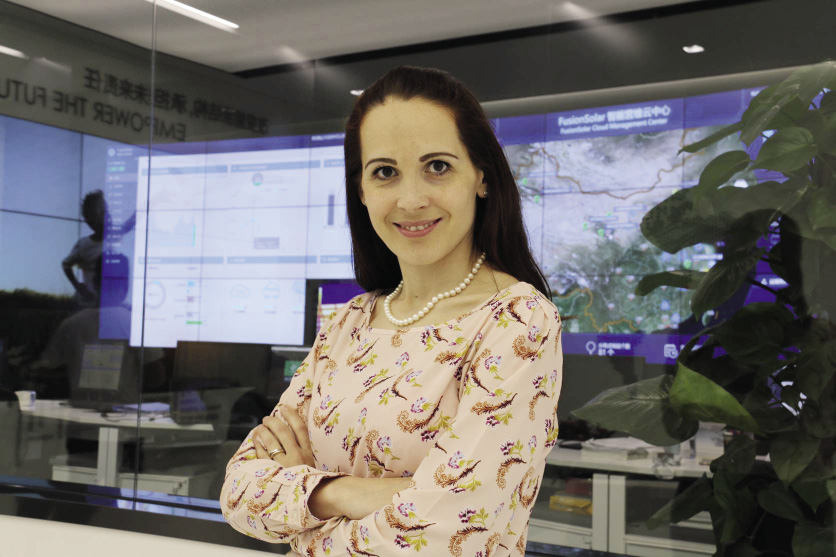How would you describe the progress that has been made by the solar sector in the Middle East since we last spoke?
I think we’ve made tremendous progress as an industry in the past year when it comes to technological improvements, new technology adoption, new markets opening up. Again, world-record tariffs, many of them coming from the Middle East. It is changing the landscape of our industry.
For the Middle East and Africa, we’re finally reaching, as of the end of last year, 13.5 GW of cumulative installations, of which roughly 10 GW is MENA. I’m proud to say that Jinko has a 25% share of that, so we are very grateful to our partners who made this possible. Last year installations in the region went down year-over-year for the first time. There was a slight drop, however, we believe that the market will grow by more than 30% this year.
And why is that? It is the combination of a few factors. One, for all of these mega-scale, multi-hundred-megawatt tenders, which have been awarded last year, we will see the implementation stage this year, at least partially. So it is just the perfect combination and the right timing. Also, I think there was huge progress in Saudi Arabia on really streamlining the tendering process, and obviously that has contributed to a large boost for the industry.
What about beyond the Gulf Cooperation Council (GCC) states?
We see that we’re gaining traction west of Egypt as well – mainly Tunisia and Morocco. And we’ve seen some very low tariffs in Africa, sub-$0.03/kWh. Morocco is issuing a new tender, so that’s extremely important.
That’s encouraging at the utility scale, but what about rooftop?
Distributed generation (DG) last year accounted for around 25% of the total market, so we’re talking about maybe a 1.2 GW market for distributed-generation [installations] in the Middle East and Africa. It may be small compared to the major mature solar economies, but it’s a huge leap forward in our region. Distributed generation has a prominent spot in the energy mix of many countries, not only in the Middle East, but in North Africa and sub-Saharan Africa as well.
I believe that tenders are great, but what drives industry in a sustainable way is repeat business, where you have your end users, the commercial-industrial sector like agriculture or municipalities, accepting solar. Basically that is the main driver in addition to hybrids – minigrids complementing or displacing diesel gensets. That is also a major driver for the sustainable development of the solar market in the MENA and throughout Africa.
Isn’t the DG segment being held back in the region by artificially low retail prices for electricity?
I guess one challenge is that in some markets in the Middle East you still have subsidized power prices. They’re artificially low, so it makes it more difficult for solar to compete.
But I think also this year a few markets will finally reach the deadline where the subsidies will either be drastically reduced or removed, so that solar will make attractive economic sense in the region. Then we will see new PV capacity deployed via tenders or direct proposal.
The DG segment has been kind of slow to start. Is that one reason why the market here appears to be a bit of a closed club, rather than having the diverse range of stakeholders that you see in more mature marketplaces?
Yes, but we’re making baby steps and I think most notable are distributed-generation markets here in the Middle East and North Africa – like the UAE, Jordan, Egypt, Morocco. We’ve also seen small IPPs [independent power producers] moving into this space. So, it’s not necessarily the EPCs’ job, which are the end users, to own the asset – rather, we’re adopting the small IPP [model]. That’s great, because it means we finally got to the point where it has become aggregable and bankable. Finally, financial institutions are coming on board to provide financial support. We are still waiting for some countries’ regulators to further liberalize and incentivize various schemes for DG solar.
It’s been working very well here in the Middle East and we see that trend is moving towards North Africa as well, so I’m expecting DG markets in the countries I’ve mentioned to grow. Saudi [Arabia] will also. This year all eyes are on Saudi Arabia, not only for the multi-hundred-megawatt scale projects, but at the same time net metering and other regulatory frameworks, which will enable distributed generation. The market is going to explode.
How do you deal with the strong localization requirement in Saudi Arabia?
We’re looking into it, that’s all I can say.
Interview by Eckhart K. Gouras
This content is protected by copyright and may not be reused. If you want to cooperate with us and would like to reuse some of our content, please contact: editors@pv-magazine.com.
